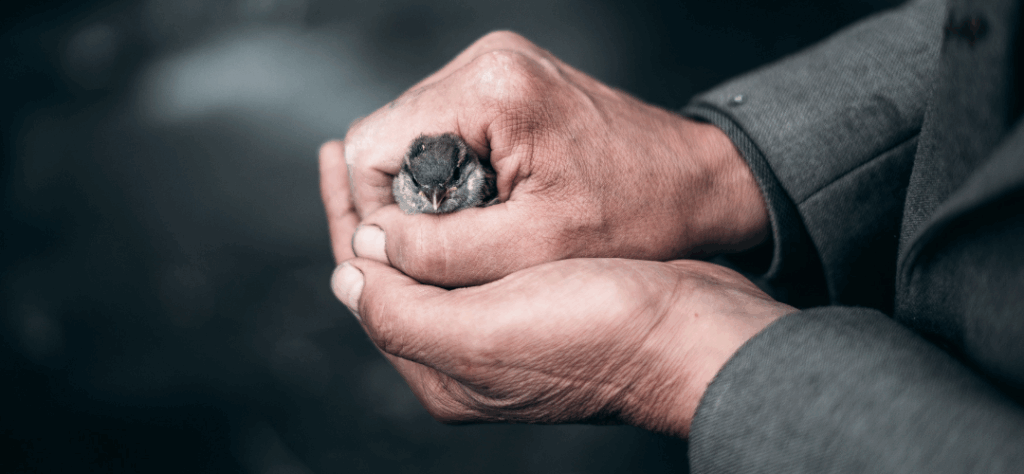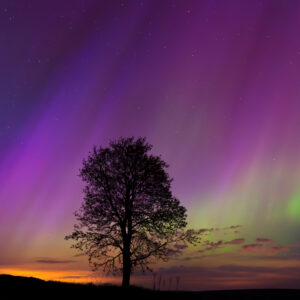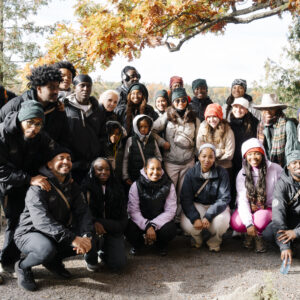When the Sky Turns Gray: What Smoke Means for Birds
But for birds, there was no refuge…
More Than Flames
When we picture wildfires, we see the flames racing across forests, destroying nests and important bird habitat. Yet long after the fire front has passed, smoke lingers. It creeps across landscapes far beyond the burn zones, covering lakes, wetlands, and the breeding grounds where countless birds continue to live and raise their young, even if some don’t make it.
That’s the story we’re trying to understand: what happens to birds caught not in the flames, but in the smoke.

Image: Wildfire Okanagan Falls by Andrew Morrissey
Following the Smoke
With satellites orbiting high above, we can track smoke as if it were any other kind of weather. Day by day, our Naturalist team mapped where the densest smoke settled using NOAA’s Hazard Mapping System. Some regions were covered for more than 10 days straight. Others endured a full month beneath a heavy haze, making it difficult for our team to start their bird monitoring surveys.
By laying these smoke maps over bird population models, we began to see a sobering picture: tens of thousands of birds likely spent their breeding season under skies choked with smoke or departed elsewhere to attempt to find cleaner air, potentially abandoning their young.
Breathing in the Danger
Wildfire smoke is more than just dust in the air, it also contains a swirling mix of tiny particles and toxic gases caused by the breakdown and combustion of natural materials (and human-made ones!). Humans exposed for too long suffer inflammation, infections, and even heart strain. Firefighters on the front lines often exceed safety thresholds for pollutants like carbon monoxide and fine particulate matter.
Birds face the same dangers, but amplified. Their lungs and air sacs are extremely delicate, built for the high-efficiency oxygen demands of flight. It takes a total of two full inhalations and two full exhales for oxygen to move throughout a bird’s entire respiratory system, potentially exacerbating the increase of wildlife smoke. Unlike humans, they can’t step indoors, close a window, or wear a mask. They breathe the smoke every moment they remain in the haze.
Research has documented real consequences: parrots exposed to smoke developed lung tissue damage and infections; chickens exposed to fire-related smoke suffered respiratory disease outbreaks and declines in egg production. In the wild, migrating birds have even abandoned stopover sites and altered flight paths to avoid dense smoke.

What We Still Don’t Know
Do birds give up their nests when smoke lingers too long? Does the haze make migration flights harder or even deadly? How much food and water vanishes when ecosystems are blanketed by smoke?
We don’t have all the answers yet. But we do know that birds are resilient. They’ve weathered storms, droughts, and fires before. Still, the scale of today’s megafires, driven by climate change, is rewriting the rules of survival.
What Now?
By piecing together smoke data and bird models, we’re beginning to uncover a hidden story: that wildfire smoke, even far from the flames, may be one of the biggest threats birds face in a warming world.
And as the skies grow grayer, their story becomes ours too. We urgently need a federally led emergency wildfire strategy to protect our feathered friends and all wildlife.
Click here to
Speak for the Trees, Animals and People Affected by Wildfires
Adetona, O., et al. (2016). Review of health effects of wildland fire smoke on wildland firefighters and the public. DOI: 10.3109/08958378.2016.1145771
Reinhardt, T.E., & Ottmar, R.D. (2004). Baseline Measurements of Smoke Exposure Among Wildland Firefighters. Journal of Occupational and Environmental Hygiene
Overton, C.T., et al. (2021). Megafires and thick smoke portend big problems for migratory birds. Ecology
Verstappen, M., & Dorresti, J. (2005). Aspergillosis in Amazon Parrots After Smoke Inhalation Injury. Journal of Avian Medicine and Surgery
Morris, C.E., et al. (1986). Laryngotracheitis outbreak in chickens exposed to smoke and chemicals. PubMed link
Sanderfoot, O.V., & Holloway, T. (2017). Air pollution impacts on avian species via inhalation exposure. Environmental Research Letters
NOAA Hazard Mapping System: Daily Smoke Data
Government of Canada. (2023). Risk Profile – Wildfires. Public Health Agency of Canada
Carnegie Museum of Natural History. How Birds Breathe with their Butts



